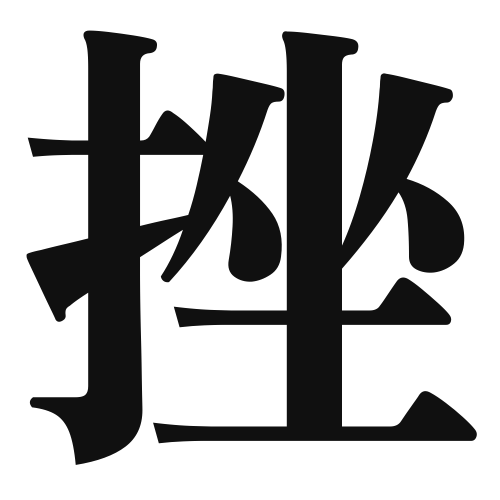1. Overview of Meaning
The kanji “挫” (za) generally means “to thwart,” “to hinder,” or “to break.” It conveys the idea of stopping or obstructing progress or movement.
2. Formation and Radical
Formation of the Kanji: The kanji “挫” is a compound character (会意文字) that combines the elements of “手” (hand) and “座” (to sit or to stop). This suggests the action of using one’s hand to stop or break something.
Radical: The radical of “挫” is “手” (shǒu), which relates to actions performed by the hand.
3. Examples of Usage
Common Words and Phrases: Some common words that include “挫” are “挫折” (zaseki), meaning “setback” or “failure,” and “挫く” (zaku), meaning “to sprain” or “to twist.”
Example Sentences in Daily Conversation:
- 彼は挫折を経験したが、再び立ち上がった。 (He experienced setbacks, but he stood up again.)
- この道は工事中で、進むのが挫かれた。 (This road is under construction, and our progress was hindered.)
4. Synonyms and Antonyms
Similar Kanji: A similar kanji is “妨” (bō), which also means “to hinder” but is often used in contexts related to interference or obstruction.
Opposite Kanji: An antonym is “進” (shin), which means “to advance” or “to proceed,” representing the opposite action of moving forward.
5. Cultural and Historical Background
Relation to Japanese Culture: The concept of “挫” is often reflected in Japanese culture, where perseverance in the face of obstacles is highly valued. The idea of overcoming setbacks is a common theme in literature and philosophy.
Proverbs and Idioms: One relevant proverb is “七転び八起き” (nana korobi ya oki), which translates to “fall seven times, stand up eight,” emphasizing resilience in overcoming difficulties.
